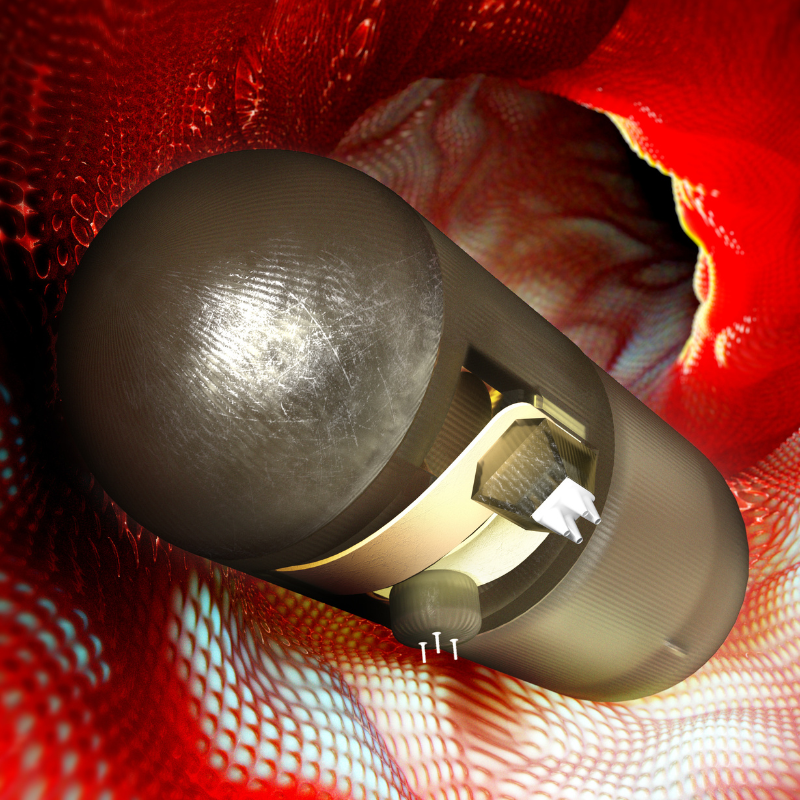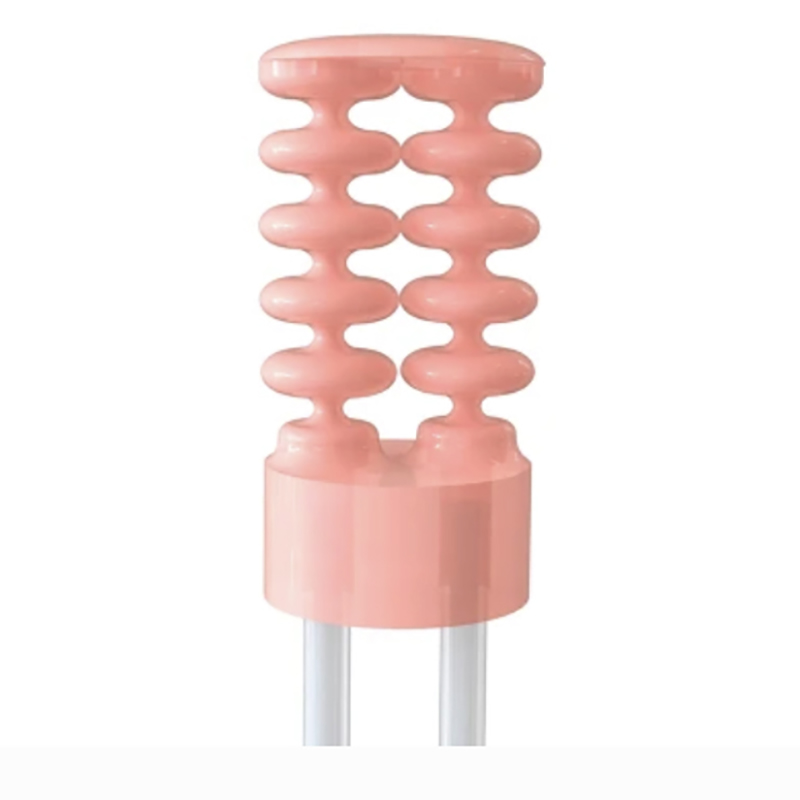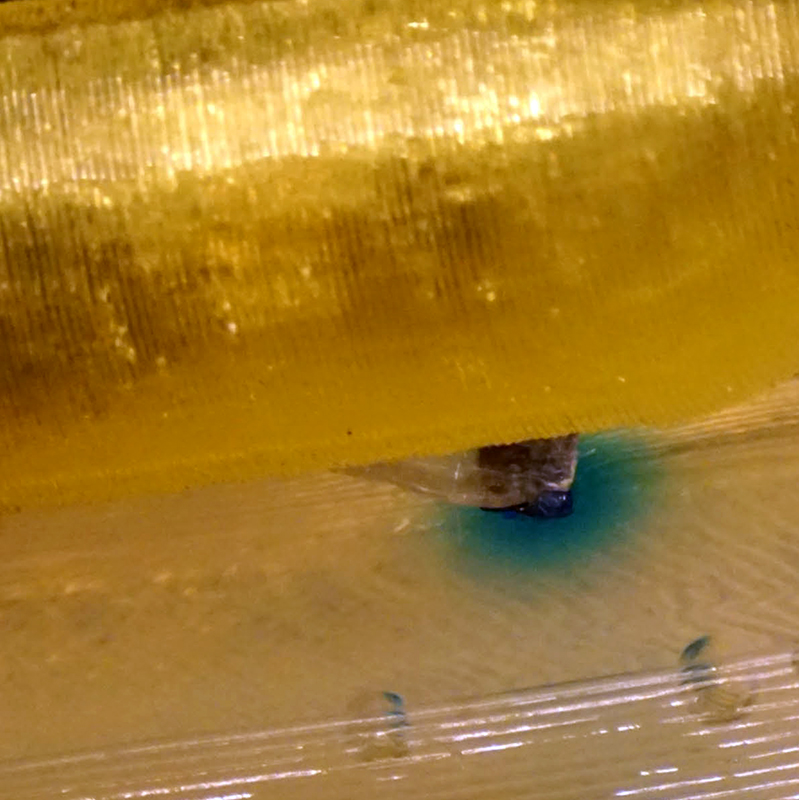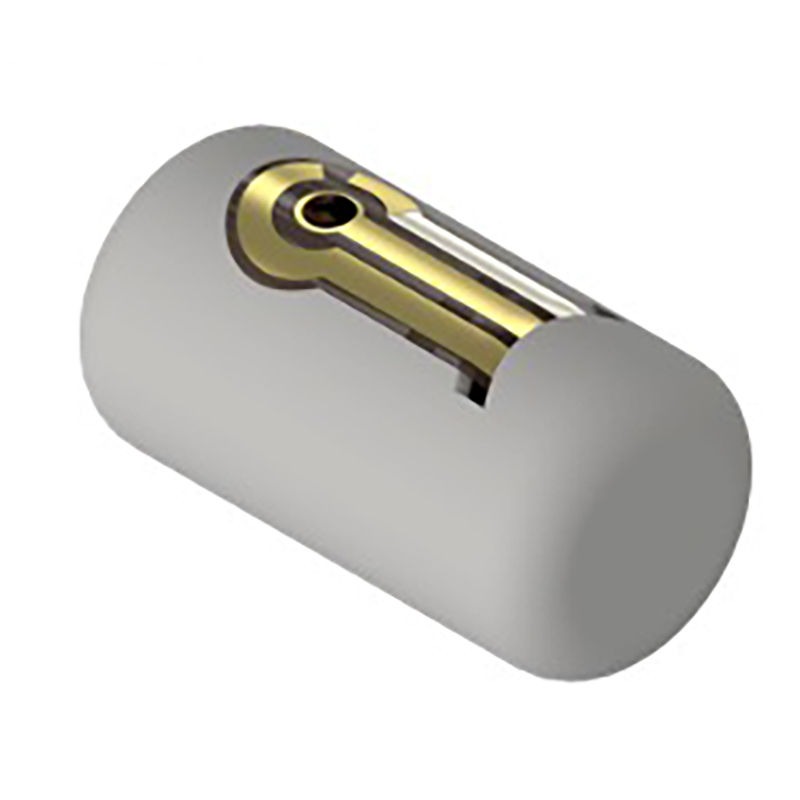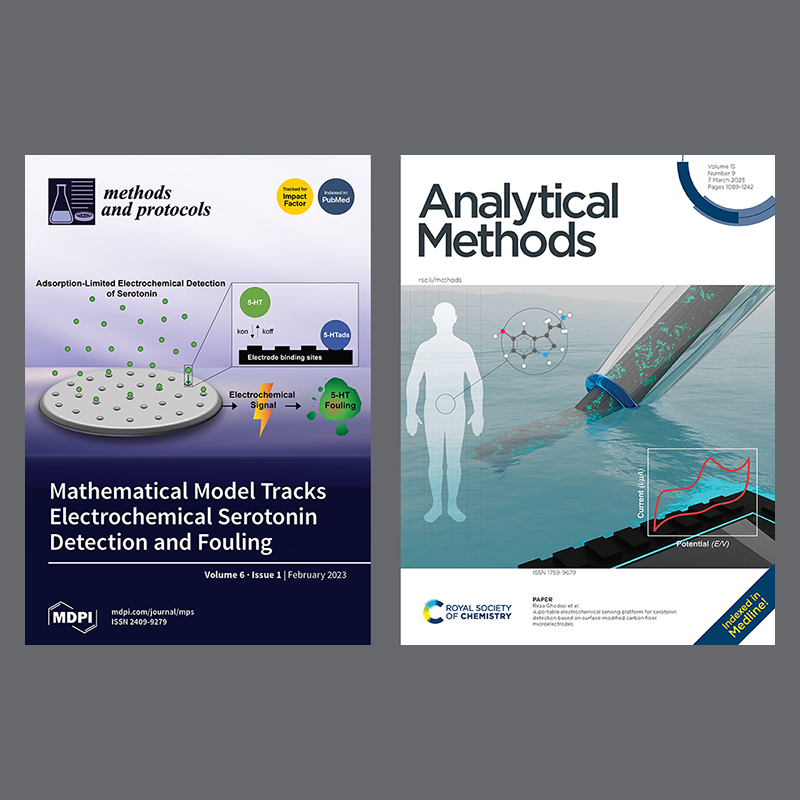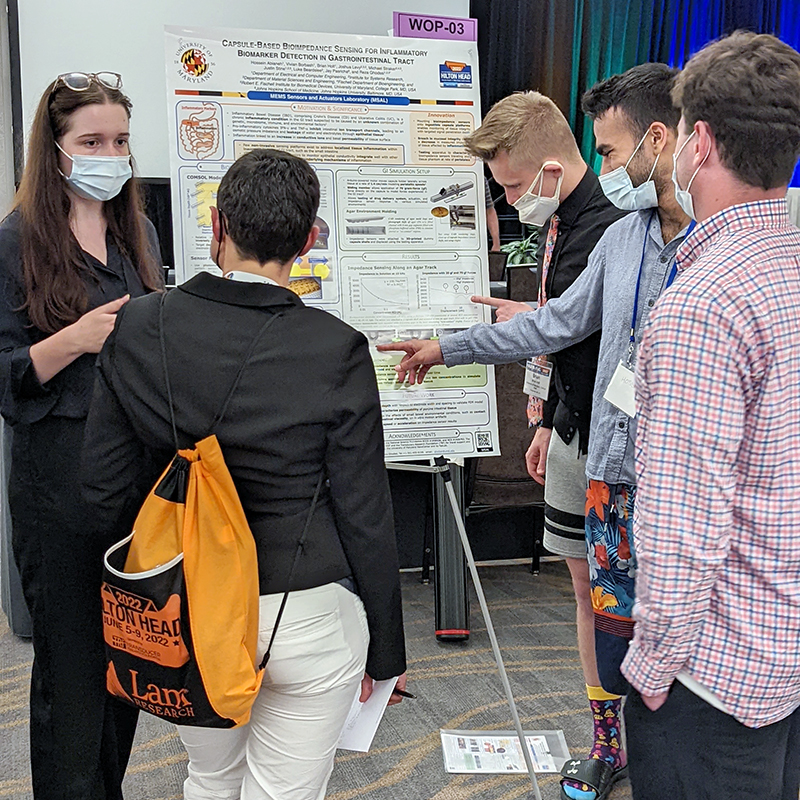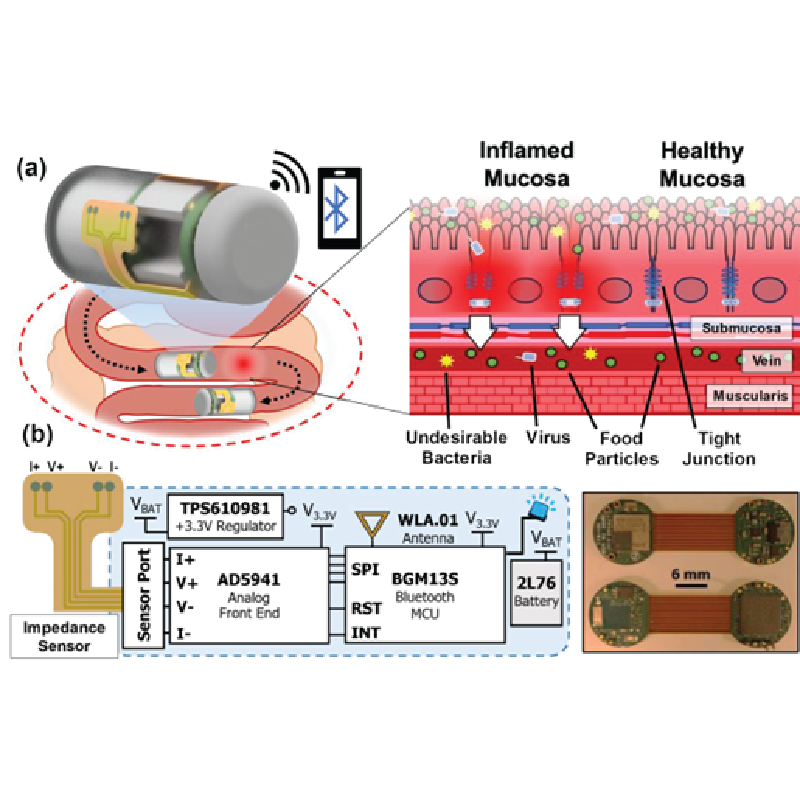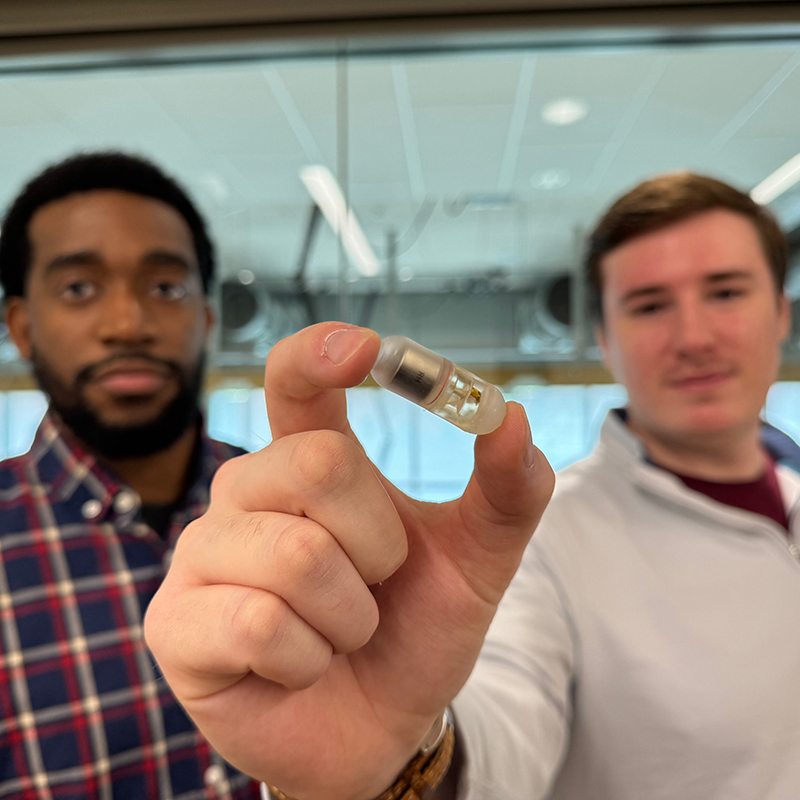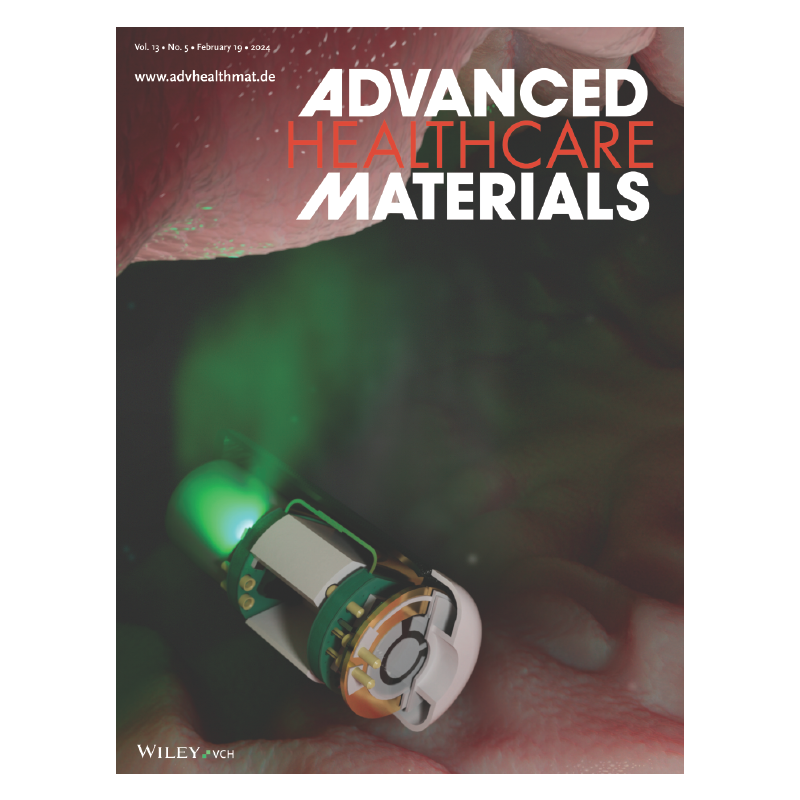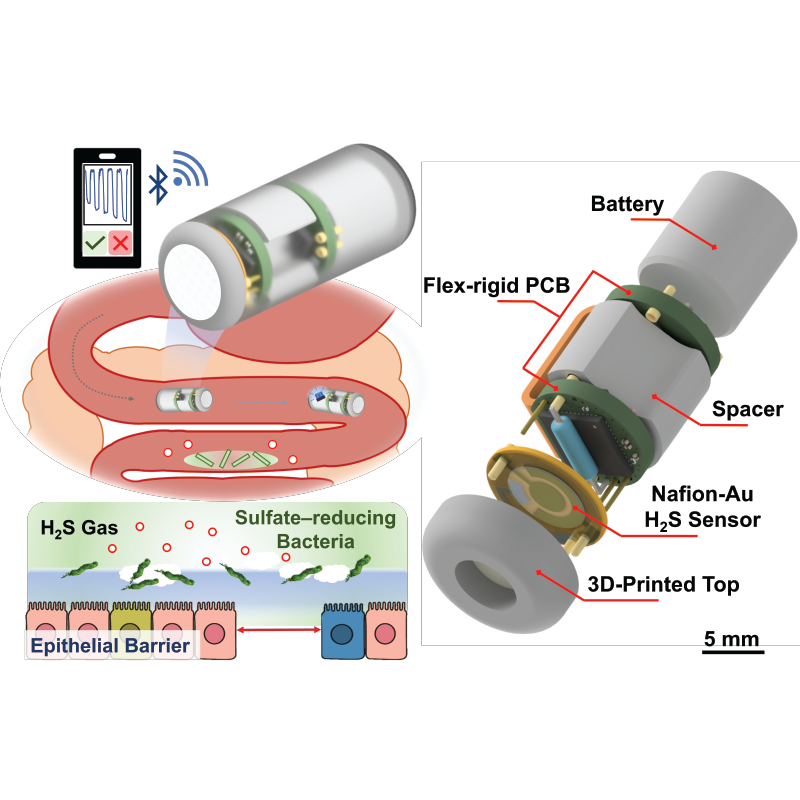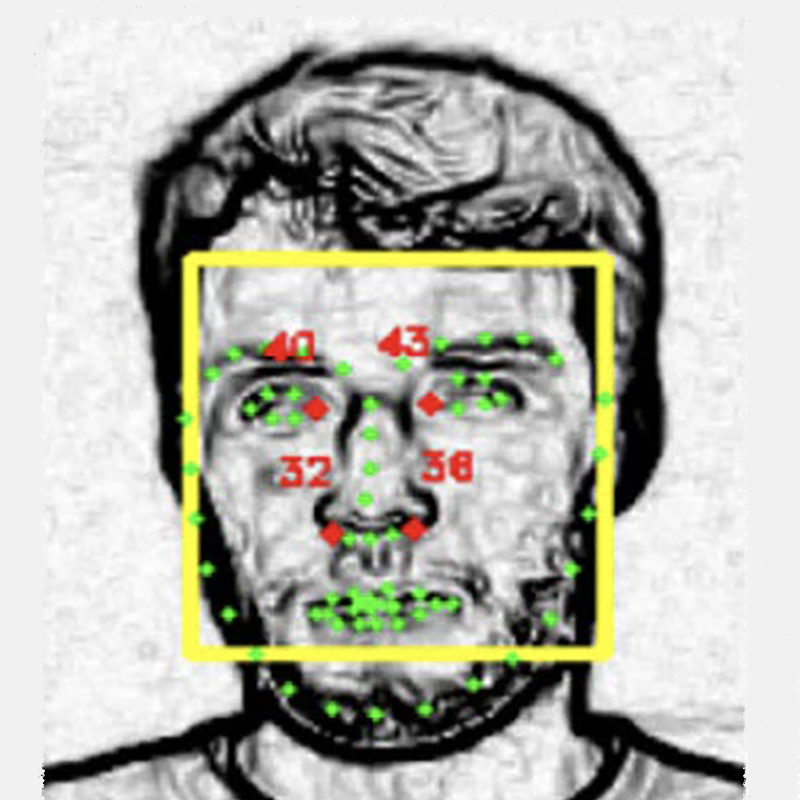2020
Alexander Castro, Leo Peckerar, Timothy Horiuchi, Pamela Abshire
A nano-quadcopter system that performs odor detection in a windless indoor environment. The system uses the Crazyflie platform and incorporates a single commercially available metal oxide semiconductor gas sensor. The authors demonstrate that rotor-induced airflow enhances odor detection. It can be considered to be the quadrotor equivalent of sniffing behavior.
2020 IEEE SENSORS Conference
Pamela Abshire and 32 others
This paper shows that even failed attempts are genuine and valuable contributions to our field provided that we learn from our mistakes and correct them. The 27 confessions span from planning oversights, digital and analog design errors, misunderstanding of devices, overlooked parasitics, LVS errors, and troubles in testing.
2020 IEEE International Symposium on Circuits and Systems (ISCAS)
2019
Bathiya Senevirathna, Sheung Luhave, Elisabeth Smela, Pamela Abshire
The first real-time imaging platform that generates high-quality images of lab-on-CMOS systems in cell culture environments.
2019 IEEE Biomedical Circuits and Systems Conference (BioCAS)
2023
Justin Stine, Katie Ruland, Luke Beardslee, Joshua Levy, Hossein Abianeh, Santiago Botasini, Pankaj Pasricha, Reza Ghodssi
Hydrogen sulfide (H2S) is a gaseous inflammatory mediator and important signaling molecule for maintaining gastrointestinal (GI) homeostasis. Excess intraluminal H2S in the GI tract has been implicated in inflammatory bowel disease and neurodegenerative disorders; however, the role of H2S in disease pathogenesis and progression is unclear. Herein, an electrochemical gas-sensing ingestible capsule is developed to enable real-time, wireless amperometric measurement of H2S in GI conditions.
Advanced Healthcare Materials
Joshua Levy, Michael Straker, Luke Beardslee, Reza Ghodssi
This paper presents the development of a simple reed switch enabled magnetically triggerable electronic actuation system for protection and localized delivery of drugs in the intestinal tract. The system relies on polymeric cantilevers that can be multiplexed and released on command by melting the adhesive that holds them in compression. These cantilevers are conformally wrapped around the capsule and hold drug-loaded microneedles that penetrate the intestinal tissue to release drugs when deployed. We demonstrate the assembly, modeling, mechanical characterization, and deployment of this actuation capsule. COMSOL analysis suggested cantilever thickness of 254 μm is ideal to achieve the desired actuation force. This result was corroborated by mechanical experiments, and deployment was achieved using a handheld magnet in 2.3 seconds. Overall, this system provides the potential for targeted drug delivery in the GI tract, improving drug efficacy while minimizing side effects.
2023 IEEE Sensors
Michael Straker, Joshua Levy, Justin Stine, Vivian Borbash, Luke Beardslee, Reza Ghodssi
The researchers present the freestanding region-responsive bilayer (FRRB), a packaging technology for ingestible capsules that can be readily applied for various functional ingestible capsule components. The bilayer is composed of rigid polyethylene glycol (PEG) under a flexible pH-responsive Eudragit® FL 30 D 55, which protects the contents of the capsule until it arrives in the targeted intestinal environment. The FRRB can be fabricated in a multitude of shapes that facilitate various functional packaging mechanisms, some of which are demonstrated in the paper. The authors characterize and validate the use of this technology in a simulated intestinal environment, confirming that the FRRB can be tuned for small intestinal release. They also show a case example where the FRRB is used to protect and expose a thermomechanical actuator for targeted drug delivery.
Microsystems & Nanotechnologies (Nature)
Jinjing Han, Justin Stine, Ashley Chapin, Reza Ghodssi
A simple, low-cost electrochemical sensing platform—a portable workstation with customized electrodes for serotonin detection that has demonstrated successfully in artificial biological fluids. The research team developed carbon-based electrodes deposited with carbon nanotubes dispersed with Nafion. The system can accurately measure serotonin concentrations in artificial urine samples, with nearly full recovery rates—an outstanding performance that confirms the feasibility of serotonin detection for future point-of-care analysis in actual biological samples and the potential for use in future self-monitoring devices.
Analytical Methods (Royal Society of Chemistry)
Ashley Chapin, Jinjing Han, Reza Ghodssi
The researchers demonstrate how an expanded adsorption model can predict and characterize the electrode detection of serotonin. The model effectively predicts both serotonin fouling and electrode responses over varying concentrations and measurement times. It can optimize and minimize the measurement time of serotonin secreted from a model enterochromaffin cell line, and can simplify and improve the characterization of serotonin detection at a selected electrode. The model could be useful when applied to other adsorption-limited electrochemical analytes and electrode types, and could improve application-specific modeling and optimization processes. It can act as a useful resource for many studies where molecular adsorption is the foundation of quantitative measurement.
Methods and Protocols (MDPI)
2022
Joshua Levy, Michael Straker, Justin Stine, Luke Beardslee, Vivian Borbash, Reza Ghodssi
A demonstration of a compact mesoscale spring actuator that can anchor an ingestible capsule, allowing it to deliver a drug deposit to locations in the GI tract mucosa. The new mechanism works with existing ingestible capsule-based sensing and communication technologies and enables treatment based on detected GI biomarkers and external commands. With the ability to stay in place for a sustained period of time, the capsule can deliver multiple doses of medication as needed.
Advanced Materials Technologies
2021
Ryan Huiszoon, Jinjing Han, Sangwook Chu, Justin Stine, Luke Beardslee, Reza Ghodssi
This work introduces an integrated system incorporated seamlessly with a commercial Foley urinary catheter for bacterial growth sensing and biofilm treatment.
IEEE Transactions on Biomedical Engineering
Adam Brown, Sangwook Chu, Madhu Kappagantu, Reza Ghodssi, James Culver
The self-assembly system of the rod-shaped tobacco mosaic virus (TMV) has been studied extensively for nanoscale applications. TMV coat protein assembly is modulated by intersubunit carboxylate groups whose electrostatic repulsion limits the assembly of virus rods without incorporating genomic RNA. To engineer assembly control into this system, the authors reprogrammed intersubunit carboxylate interactions to produce self-assembling coat proteins in the absence of RNA and in response to unique pH and ionic environmental conditions.
ACS Biomacromolecules
2020
Ashley Chapin, Pradeep Rajasekaran, David Quan, Liangbing Hu, Jens Herberholz, William Bentley, Reza Ghodssi
Develops a platform that provides access to the specific site of serotonin production, important because serotonin is secreted from the bottoms of cells. An innovative porous membrane with an integrated serotonin sensor on which a model of the gut lining can be grown allowed researchers to access both top and bottom sides of the cell culture.
Microsystems & Nanoengineering (a Nature publication)
Ashley Chapin, Jinjing Han, Ta-Wen Ho, Jens Herberholz, Reza Ghodssi
An integrated electrochemical and electrophysiological biomonitoring system, enabling the study of molecular signaling along the gut-brain-axis (GBA).
Journal of Microelectromechanical Systems
Pradeep Rajasekaran, Ashley Chapin, David Quan, Jens Herberholz, William Bentley, Reza Ghodssi
Explores the development of a 3D-printed housing, the maintenance of a healthy lab-on-a-chip gut cell culture, and the evaluation of the two types of sensors integrated on the cell culture membrane.
Microsystems & Nanoengineering (a Nature publication)
Justin Stine, Luke Beardslee, Sangwook Chu, Sanwei Liu, Dana Motabar, William Bentley, Reza Ghodssi
The bPod prototype developed in the S&A paper is reduced to the size of a cherry. This research significantly advances the PCB-electronics design, DO sensor, and packaging to achieve the overall system miniaturization desired for use in realistic bioreactor environments.
Journal of Microelectromechanical Systems
Justin Stine, Luke Beardslee, Rajendra Sathyam, William Bentley, Reza Ghodssi
The researchers develop a golf ball-sized bioprocessing online device (bPod) capable of real-time in situ monitoring of bioreactor cell culture parameters, such as dissolved oxygen.
Sensors & Actuators B: Chemical
George Banis, Ragendramayavan Sathyam, Luke Beardslee, Justin Stine, Reza Ghodssi
Describes an integrated ingestible capsule sensing system with triglyceride film-coated capacitive sensors that can measure biochemical species such as pancreatic lipase and bile acids in the duodenum. The microfabricated capacitive sensors communicate via a Bluetooth low-energy (BLE)-microcontroller, which allows wireless connectivity to a mobile app.
Lab on a Chip
Luke Beardslee, George Banis, Sangwook Chu, Sanwei Liu, Ashley Chapin, Justin Stine, Pankaj Pasricha, Reza Ghodssi
This review examines the conventional techniques, as well as ingestible sensors and sensing systems that are currently under development for use in disease screening and diagnosis for GI disorders. Design considerations, fabrication, and applications are discussed.
ACS Sensors
2019
Sowmya Subramanian, Ryan Huiszoon, Sangwook Chu, William Bentley, Reza Ghodssi
A review that focuses on several types of microsystems for biofilm evaluation including optical, electro-chemical, and mechanical systems. This review will show how these devices can lead to better understanding of the physiology and function of these communities of bacteria, which can eventually lead to the development of novel treatments that do not rely on high-dosage antibiotics.
Biofilm
Sangwook Chu, Adam Brown, James Culver, Reza Ghodssi
Research into Tobacco mosaic virus (TMV)-based assembly of glucose oxidase electrodes for the development of advanced enzymatic biofuel cells (EBCs).
PowerMEMS 2018: Journal of Physics Conference Series, IOP Publishing
2019
Christopher Darmody and Neil Goldsman
An investigation of the degree of incomplete ionization of aluminum-doped 4H-silicon carbide. The research contributes to the advance of p-type silicon carbide (SiC) technology.
Journal of Applied Physics
2021
Liuxian Zhao, Timothy Horiuchi, Miao Yu
A novel gradient index (GRIN) acoustic metamaterial is proposed based on the concept of optical modified generalized Luneburg lens (MGLL). With the MGLL, double-foci and high energy density between the two foci can be achieved, which enables the realization of an ultra-long acoustic jet between the two foci.
Journal of the Acoustical Society of America Express Letters 1
2020
Alexander Castro, Leo Peckerar, Timothy Horiuchi, Pamela Abshire
A nano-quadcopter system that performs odor detection in a windless indoor environment. The system uses the Crazyflie platform and incorporates a single commercially available metal oxide semiconductor gas sensor. The authors demonstrate that rotor-induced airflow enhances odor detection. It can be considered to be the quadrotor equivalent of sniffing behavior.
2020 IEEE SENSORS Conference
2019
Bathiya Senevirathna, Sheung Luhave, Elisabeth Smela, Pamela Abshire
The first real-time imaging platform that generates high-quality images of lab-on-CMOS systems in cell culture environments.
2019 IEEE Biomedical Circuits and Systems Conference (BioCAS)
2023
Noah Barnes, Olivia Young, Adira Colton, Xiaolong Liu, Miroslaw Janowski, Dheeraj Gandhi, Ryan Sochol, Jeremy Brown, Axel Krieger
During minimally invasive surgery, surgeons maneuver tools through complex anatomies, which is difficult without the ability to control the position of the tools inside the body. A potential solution for a substantial portion of these procedures is the efficient design and control of a pneumatically actuated soft robot system. The authors designed and evaluated a system to control a steerable catheter tip. A macroscale 3D printed catheter tip was designed to have two separately pressurized channels to induce bending in two directions. A motorized hand controller was developed to allow users to control the bending angle while manually inserting the steerable tip. Preliminary characterization of two catheter tip prototypes was performed and used to map desired angle inputs into pressure commands. The integrated robotic system allowed both a novice and a skilled surgeon to position the steerable catheter tip at the location of cylindrical targets with sub-millimeter accuracy. The novice was able to reach each target within ten seconds and the skilled surgeon within five seconds on average.
International Journal of Computer Assisted Radiology and Surgery
Sunandita Sarker, Adira Colton, Ziteng Wen, Xin Xu, Metecan Erdi, Anthony Jones, Peter Kofinas, Eleonora Tubaldi, Piotr Walczak, Miroslaw Janowski, Yajie Liang, Ryan D. Sochol
Microinjection protocols are ubiquitous throughout biomedical fields, with hollow microneedle arrays (MNAs) offering distinctive benefits in both research and clinical settings. Unfortunately, manufacturing-associated barriers remain a critical impediment to emerging applications that demand high-density arrays of hollow, high-aspect-ratio microneedles. To address such challenges, this paper presents a hybrid additive manufacturing approach that combines digital light processing (DLP) 3D printing with “ex situ direct laser writing (esDLW)” to enable new classes of MNAs for fluidic microinjections.
Advanced Materials Technologies
2022
Ziteng Wen, Ruben Acevedo, Kinneret Rand-Yadin, Ryan Sochol
Microinjection processes are integral to developmental biology, transgenics, and in vitro fertilization. However, the microneedles that underly such applications are limited by clogging susceptibility and undesired variations in tip shape and size. The authors investigate the use of a submicron-scale additive manufacturing strategy termed “ex situ Direct Laser Writing (esDLW)” for 3D printing microinjection needles. Results for needles designed with 2.5 μm-thick walls and 10 μm inner diameters revealed microfluidic burst pressures above 70 kPa – the critical target for zebrafish embryo microinjection applications – including several cases in excess of 250 kPa.
SeeTrueTechnology, Inc.
2023
Michael Bonthron, Eleonora Tubaldi
Multistable mechanical metamaterials (MMM) have demonstrated wave guidance capabilities, energy harvesting, and mechanical computing by arranging multistable unit cells into arrays. The transition between stable configurations of MMM has primarily been activated and modeled considering quasi-static forcing. In this work, transverse oscillatory loads are used to manipulate the response of a one-dimensional chain of bistable arches. By varying the magnitude and frequency of excitation, we tailor the motion of the structure with respect to its stable equilibrium states. We reveal regions within the parameter space ranging from intrawell motion constrained to a single energy well to periodic and chaotic interwell motion which vacillates between multiple energy wells. The dynamics of the nonlinear system will be analytically studied by solving the continuum equations of motion with direct time integration methods, numerical continuation techniques (pseudo-arclength continuation), and methods from dynamic analysis (Lyapunov Exponents). This study will open avenues to designing and reprogramming structures to exhibit or prohibit large motion for programmable bands of input magnitude and frequencies.
Bulletin of the American Physical Society (APS March Meeting 2024)
Eleonora Tubaldi, Kieran Barvenik, Michael Bonthron
Soft porous metamaterials with periodically-distributed pores are commonly known for their auxetic behavior. This nonlinear response is the result of a short-wavelength global buckling mode under compressive loading. Unlocking new pathways to trigger global buckling mode shapes with different pores rearrangements could open new avenues for developing intelligent, programmable, and multifunctional devices. This work explores a novel soft porous metamaterial that demonstrates different short-wavelength global buckling modes under positive and negative pressure. The authors investigate the design space to characterize this twofold buckling instability and post-buckling behavior by varying the geometric parameters of the porous metamaterial.
Bulletin of the American Physical Society (APS March Meeting 2024)
Kieran Barvenik, Zachary Coogan, Eleonora Tubaldi
The high sensitivity of thin shell buckling with respect to structural imperfections is a well-known issue resulting in deviations between theoretical and experimental findings. These imperfections often arise from unwanted manufacturing defects. In this work, the authors investigate the effects of seeding strategic macro scale imperfections in soft, thin hemispherical shells to achieve multifunctional and preprogrammable behaviors. A variety of seeded imperfections, including narrow, symmetry-breaking channels or fixed ridges, are explored to enable the activation of different buckling modes, thereby unlocking complex reconfigurable deformation patterns. They explore analytical, numerical, and experimental formulations to inform the placement of seeded imperfections and highlight agreement across each model.
Bulletin of the American Physical Society (APS March Meeting 2024)
2022
Liuxian Zhao, Chaunxing Bi, Miao Yu
A lens design based on a concentric circular structure with continuous changing of thickness defined in a thin plate structure for focusing a plane wave into three spots (triple focusing) and for splitting elastic waves emanating from a point source into three collimated beams of different directions (three-beam splitting). The locations of focal points and directions of collimated beams can be engineered by changing the lens thickness profiles according to the governing equations. The simply designed miniature lens overcomes the limitations of previous triple focusing and beam splitters. This gradient-index (GRIN) design can benefit applications that require on-board multi-source energy harvesting—for example, damage detection, beam steering, signal processing, vibration control, underwater detection, multiplexing, structural health monitoring, and ultrasonic medical imaging.
International Journal of Mechanical Sciences
Liuxian Zhao, Chaunxing Bi, Miao Yu
The ability to control and manipulate elastic waves is important for applications such as structural health monitoring, signal processing, and vibration isolations. In this paper, the authors investigated the feasibility of using the Rays Inserting Method (RIM), an approach originally proposed for optical elements, to design structural components for flexural wave manipulation along desired paths. A lens was designed to act as a collimator with a point source excitation. A lens was designed to act as a waveguide which can rotate the direction of incident wave with 45°. Lenses were achieved with variable thickness structures.
Results in Physics
Liuxian Zhao, Miao Yu
A gradient index (GRIN) structural lens based on the concept of generalized Luneburg lens (GLL) is proposed. This lens allows for the realization of double foci and localization of energy flow between the two focal spots, thereby achieving ultralong focusing.
arXiv.org, via Cornell University
Liuxian Zhao, Hyun-Tae Kim, Miao Yu
A gradient index (GRIN) structural lens based on the concept of generalized Luneburg lens (GLL) allows for the realization of double foci and localization of energy flow between the two focal spots, thereby achieving ultralong focusing for a broadband frequency range. In addition, full length at half maximum (FLHM), and full width at half maximum (FWHM) of the focal region of the lens can be tailored through the design of the focal length of the GLL. This offers a simple and flexible approach of engineering the GLL focusing characteristics and energy distributions for many applications, particularly vibration-based energy harvesting.
Mechanical Systems and Signal Processing (Elsevier)
Kit Pan Wong, Hyun-Tae Kim, Keshav Rajasekaran, Amirhossein Yazdkhasti, Bala Sai Sudhakar, An Wang, Samuel E. Lee, Kenneth Kiger, James H. Duncan, and Miao Yu
This work will benefit many applications that require high-speed interrogation of fiber-optic FP interferometric sensors. An optical interrogation system employing a piezoelectric FP tunable filter and an array of fiber-Bragg gratings for wavelength referencing is developed to acquire the reflection spectrum of FP sensors at a high interrogation speed with a wide wavelength range. Pressure measurement results show that the high-speed spectral domain interrogation method has the advantages of being robust to light intensity fluctuations and having a much larger dynamic range compared with the conventional intensity-based interrogation method. Moreover, owing to its capability of measuring the absolute FP cavity length, this interrogation system mitigates the sensitivity drift that intensity-based interrogation often suffers from. The acoustic measurement results demonstrate that the high-speed spectral domain interrogation method is capable of high-frequency acoustic measurements of up to 20 kHz.
Applied Optics
2021
Hyun-Tae Kim, Miao Yu
The authors develop an ultracompact on-fiber multiparameter sensor that employs multiple guided-wave surface plasmon resonances (GWSPRs) and machine learning-based signal processing. The sensor structure entails a gold plasmonic crystal cavity covered with a planar dielectric waveguide on the end-face of a single-mode fiber. Incident light on the gold gratings of the plasmonic crystal cavity excites surface plasmon resonances, which are coupled into the waveguide and induce multiple, high-Q GWSPRs. This sensor can benefit multifunctional analysis in a broad range of biological, chemical, and environmental monitoring applications.
IEEE Journal of Lightwave Technology
Liuxian Zhao, Timothy Horiuchi, Miao Yu
A novel gradient index (GRIN) acoustic metamaterial is proposed based on the concept of optical modified generalized Luneburg lens (MGLL). With the MGLL, double-foci and high energy density between the two foci can be achieved, which enables the realization of an ultra-long acoustic jet between the two foci.
Journal of the Acoustical Society of America Express Letters 1
2020
Hyun-Tae Kim, Wonseok Hwang, Yun Liu, Miao Yu
The researchers develop an RI-based ultracompact fiber-optic differential gas sensor. The sensor’s sensitivity and selectivity to particular gas molecules is enhanced by using MOF-based dual Fabry-Perot (FP) nanocavities.
Optics Express
